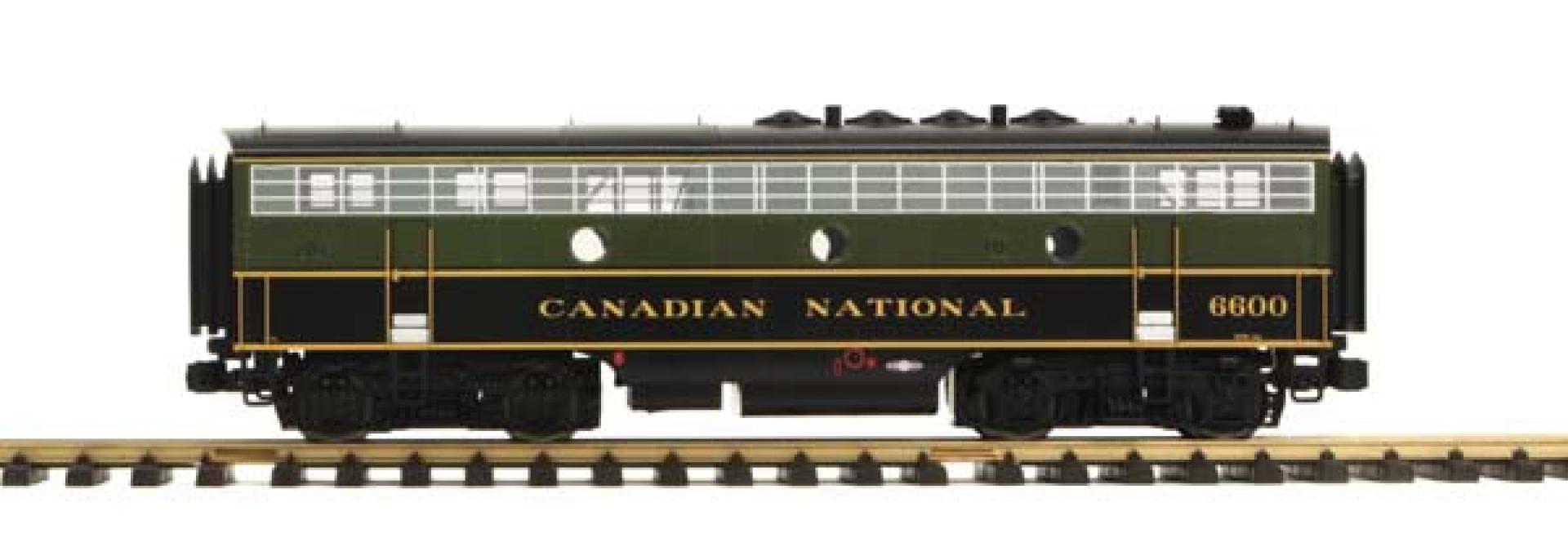
Canadian National G Gauge RailKing One Gauge F-7 B-Unit Diesel (Non-Powered)
Overview
The F-unit, however, was, in Trains magazine editor David P. Morgan's words, "the diesel that did it" - retired the steam engine and changed railroading forever. The F-unit and its contemporaries were also the first standardized locomotive designs bought by American railroads since USRA steam engines. Whereas the steam engines of most railroads had a distinctive and easily-recognized "look," F-units were the same everywhere. But they had one great visual advantage over steam: their flat sides were like rolling billboards. Artists at EMD and the railroads responded with distinctive color schemes and, for the first time since the late 1800's, American locomotives became a riot of color in the postwar era.
Externally, the F-7 was very similar to the earlier F-3. The key spotting features that distinguished an F-7 were its stainless steel upper body grilles that replaced the "chicken wire" worn by most F-3s, and the rooftop dynamic brake fan that replaced the F-3's rectangular roof vents just behind the cab. Internally, the F-7 was also an evolution of the F-3. While horsepower was the same, new D27 traction motors allowed the F-7 to handle a heavier load.
Relive the sights, sounds, and drama of postwar railroading with this four-motored, full-scale 1:32 model. Throttle down to speeds as low as 3 scale miles per hour with any load, or roll along at the prototype's maximum speed of 102 mph with passenger gearing. Proto-Sound 2.0 offers authentic EMD 567 prime mover sounds, a first-generation diesel horn and bell, crew and station sounds, and adjustable smoke volume. The RailKing F-7 features the same level of superb detailing that characterizes our F-3, with added-on details that include legible builder's plates, grab irons, multiple-unit hoses, rooftop lift rings, see-through rooftop fans, steam generator exhaust stack (for passenger car heating), windshield wipers, and trucks with separately-applied spring hangers, brake cylinders, and air pipes. As with the F-3, each A-unit is supplied with two sets of pilots: a fully-detailed pilot with narrow coupler opening for wide-radius curves, and a less-detailed pilot with wide coupler opening for operation on tighter curves.
